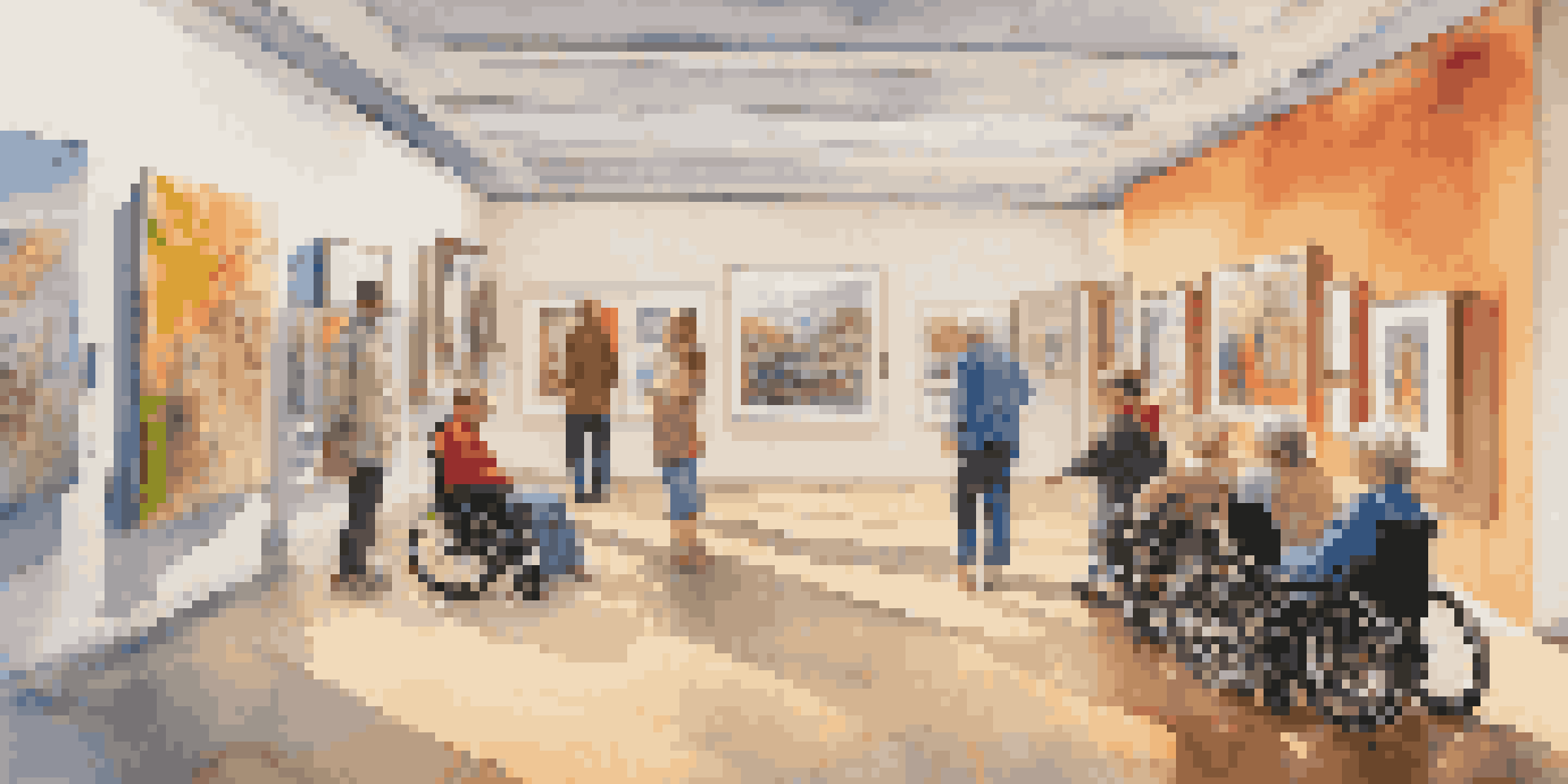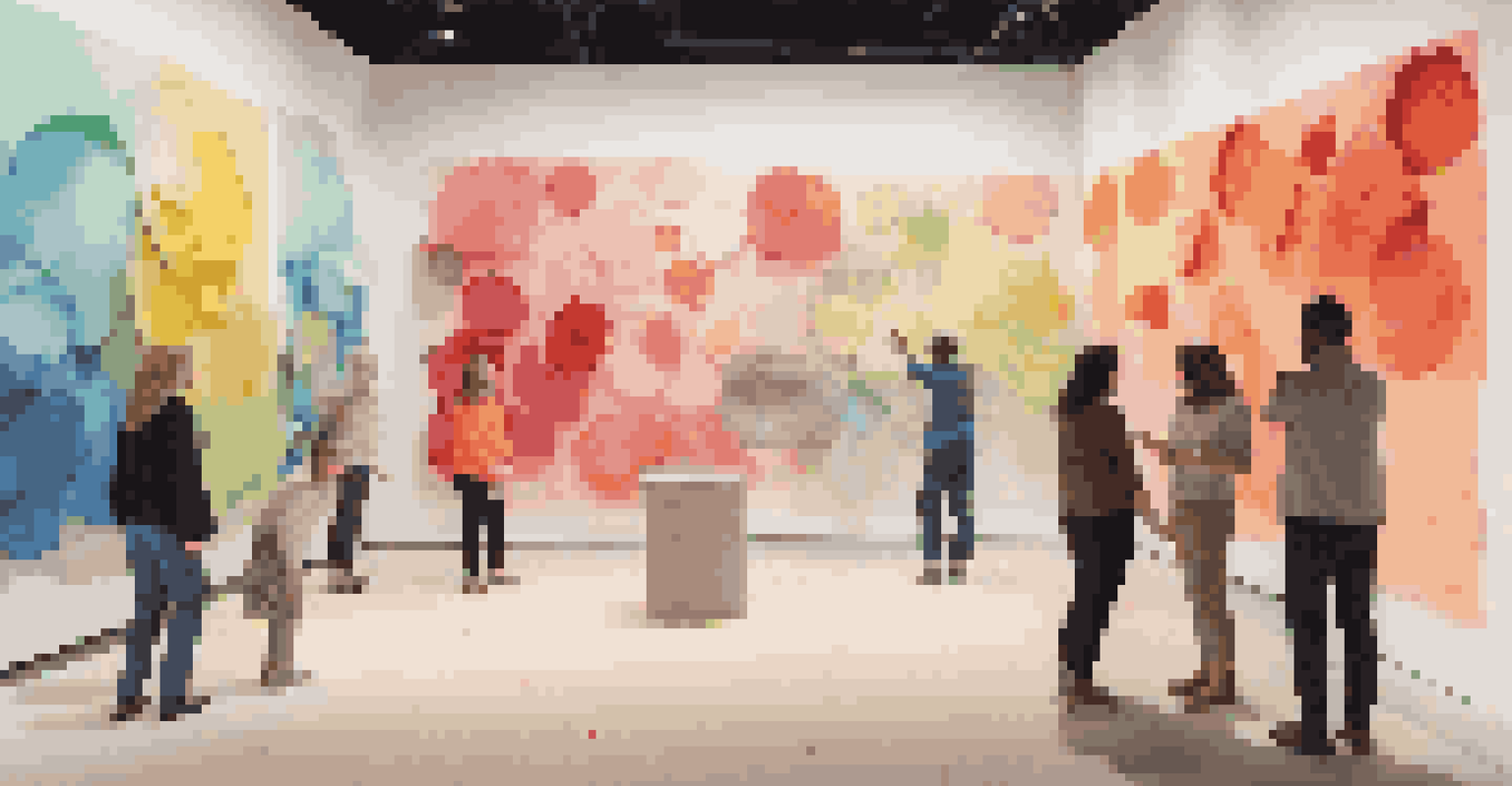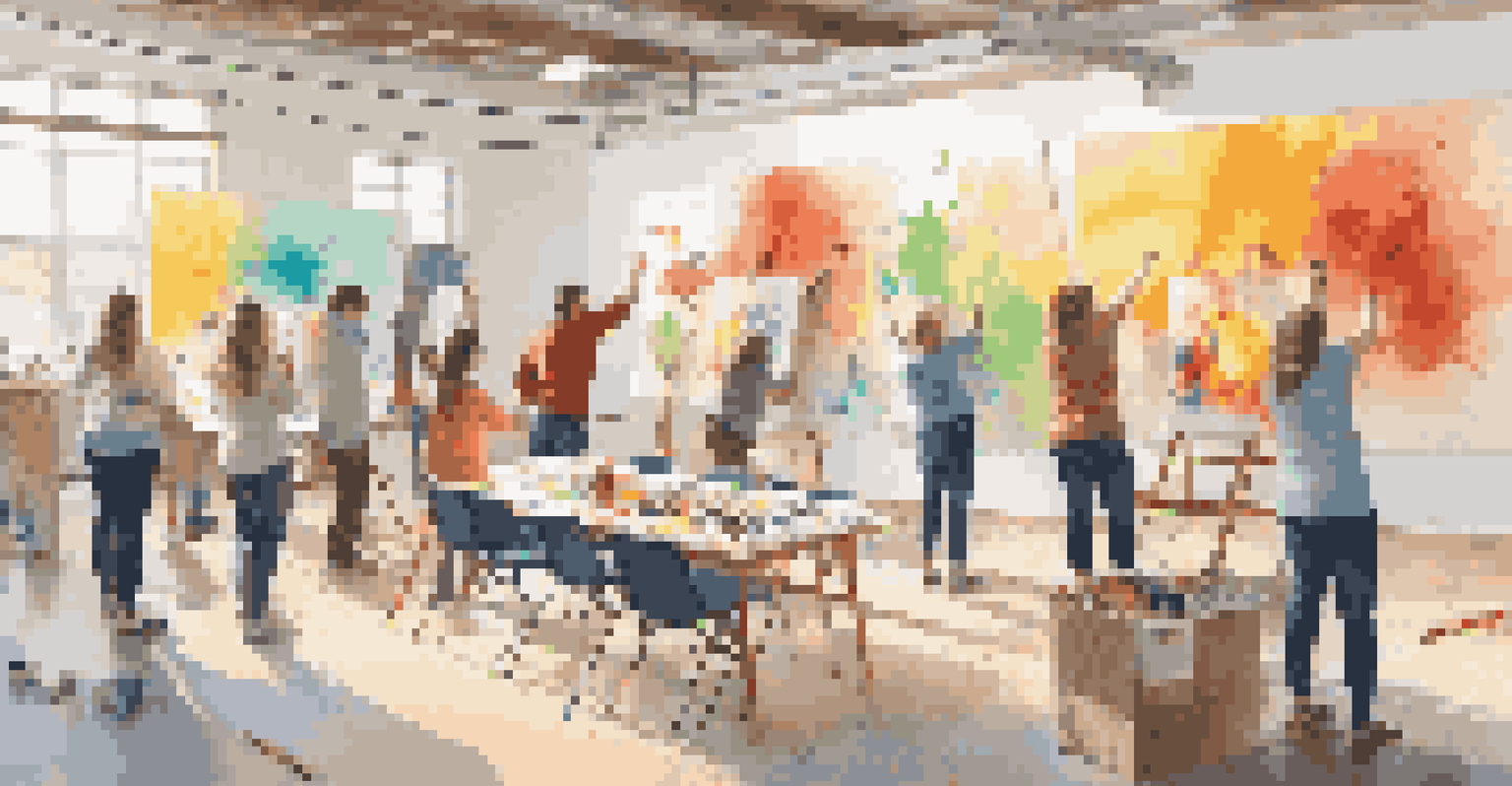Navigating Accessibility Laws in the Art World

The Importance of Accessibility in Art Spaces
Accessibility in the art world goes beyond physical spaces; it encompasses the experience of art itself. Ensuring that everyone, regardless of ability, can engage with art is crucial for fostering a diverse audience. Think of it like opening a window to fresh air—when we let everyone in, we enrich the entire atmosphere of creativity and expression.
Art is not what you see, but what you make others see.
Art institutions have a responsibility to create inclusive environments. This includes everything from wheelchair ramps and braille signage to sensory-friendly exhibitions. By embracing accessibility, we not only comply with laws but also celebrate the unique contributions of all individuals.
In essence, accessible art spaces invite richer conversations and connections. When everyone can participate, the stories told through art become more vibrant and varied. This inclusivity nurtures a more profound appreciation for the arts, benefiting both the audience and the artists.
Key Accessibility Laws Affecting Art Institutions
Several laws govern accessibility in public spaces, including the Americans with Disabilities Act (ADA) in the U.S. This legislation mandates that public venues, including galleries and museums, provide equal access to all individuals. Understanding these laws is vital for art institutions to avoid legal repercussions and promote inclusivity.

The ADA outlines specific requirements, such as designated accessible parking, pathways, and restrooms. However, the law also emphasizes the importance of effective communication, meaning institutions must consider how they present information to diverse audiences. This might include providing audio guides, captions, or tactile experiences for those with sensory impairments.
Inclusivity Enriches Art Experiences
Creating accessible art spaces allows everyone to engage with art, fostering a diverse and vibrant community.
Navigating these laws can feel daunting, but they ultimately serve as a framework for creating welcoming spaces. Institutions that prioritize compliance not only protect themselves legally but also demonstrate a commitment to their community. This proactive approach can enhance their reputation and foster loyalty among a broader audience.
Challenges in Implementing Accessibility Measures
Despite the clear benefits, many art institutions face challenges when it comes to implementing accessibility measures. Budget constraints often limit the resources available for renovations or training staff on best practices. This can lead to a cycle where accessibility takes a back seat, leaving many individuals feeling excluded.
The beauty of art is that it can speak to anyone, regardless of their background or ability.
Additionally, there may be a lack of awareness or understanding of the specific needs of disabled patrons. For instance, what works for someone with a mobility impairment might not be suitable for someone with a visual impairment. This highlights the importance of engaging with the community to identify diverse needs and develop tailored solutions.
Overcoming these challenges requires creativity and collaboration. Many organizations have found success by partnering with local disability advocacy groups, which can provide valuable insights and resources. By fostering these relationships, art institutions can create a more inclusive environment while also benefiting from shared knowledge.
The Role of Technology in Enhancing Accessibility
Technology plays a significant role in enhancing accessibility within the art world. From virtual tours that allow remote access to exhibitions for individuals with mobility challenges to apps that provide additional context through audio descriptions, the possibilities are vast. Embracing technology can bridge gaps and foster a deeper connection with art.
For example, augmented reality (AR) can create immersive experiences that cater to different sensory needs. Imagine an exhibition where visitors can use their smartphones to receive tailored narratives or visual enhancements. This not only makes art more engaging but also empowers individuals to experience it on their terms.
Technology Enhances Accessibility
Utilizing technology, such as virtual tours and augmented reality, can bridge gaps and create immersive experiences for all.
However, it's essential to ensure that technological solutions are user-friendly and accessible to all. Institutions should consider factors such as ease of use, compatibility with assistive devices, and clear instructions. When implemented thoughtfully, technology can transform the way we experience art, making it more inclusive and enjoyable for everyone.
Creating Inclusive Art Programs and Exhibitions
Developing inclusive art programs and exhibitions is essential for engaging diverse audiences. This might involve curating shows that feature artists with disabilities or incorporating themes that resonate with various communities. By focusing on inclusivity, institutions can create a sense of belonging for all visitors.
Workshops and educational programs should also be designed with accessibility in mind. Offering activities that cater to different abilities and learning styles can make art more approachable. For instance, providing hands-on experiences or guided tours can enhance understanding and appreciation.
Moreover, feedback from participants is invaluable. Institutions should actively seek input from disabled individuals to ensure that programs meet their needs. By fostering an open dialogue, art spaces can continuously improve and adapt, ensuring that everyone feels welcomed and valued.
Advocacy and Community Engagement in the Art World
Advocacy plays a crucial role in promoting accessibility in the art world. Artists, curators, and patrons can all contribute to raising awareness and pushing for change. By sharing stories and experiences related to accessibility, individuals can inspire institutions to take meaningful action.
Community engagement is equally important. Collaborating with local organizations and advocacy groups can help art institutions understand the specific needs of their audiences. These partnerships can lead to innovative programs and initiatives that truly reflect the community's diversity.
Community Engagement Drives Change
Collaborating with local advocacy groups helps art institutions understand diverse needs and develop inclusive programs.
Ultimately, advocacy and community engagement create a ripple effect. As more voices join the conversation around accessibility, art institutions will feel encouraged to prioritize inclusivity. This collaborative approach not only strengthens the art world but also enriches the lives of those involved.
The Future of Accessibility in the Art World
Looking ahead, the future of accessibility in the art world holds great promise. As awareness grows and technology advances, we can expect to see more inclusive practices becoming the norm. The ongoing dialogue about accessibility is likely to inspire innovative solutions that cater to the diverse needs of audiences.
Institutions are beginning to recognize that accessibility is not merely a legal requirement but a core value that enhances the overall experience. By prioritizing inclusivity, they open their doors to new audiences and perspectives. This shift can lead to a more vibrant and dynamic art community.

In conclusion, navigating accessibility laws in the art world is an ongoing journey. While challenges exist, the commitment to creating inclusive spaces will ultimately enrich the art experience for everyone. Together, we can envision a future where all individuals can engage with art in meaningful ways.